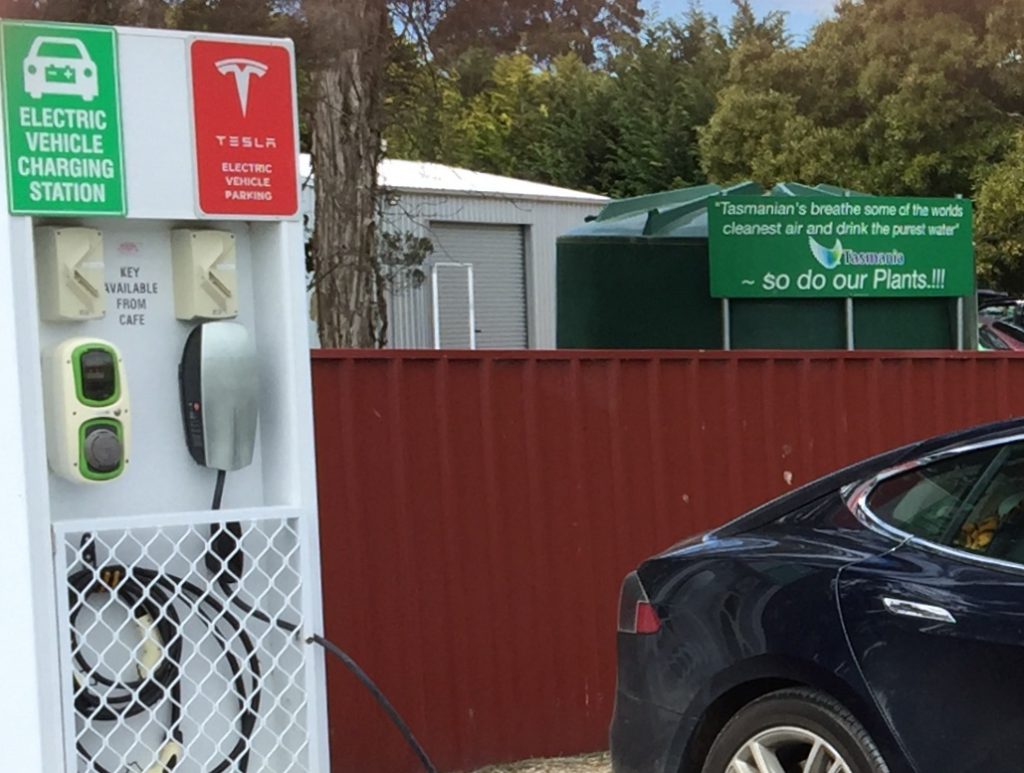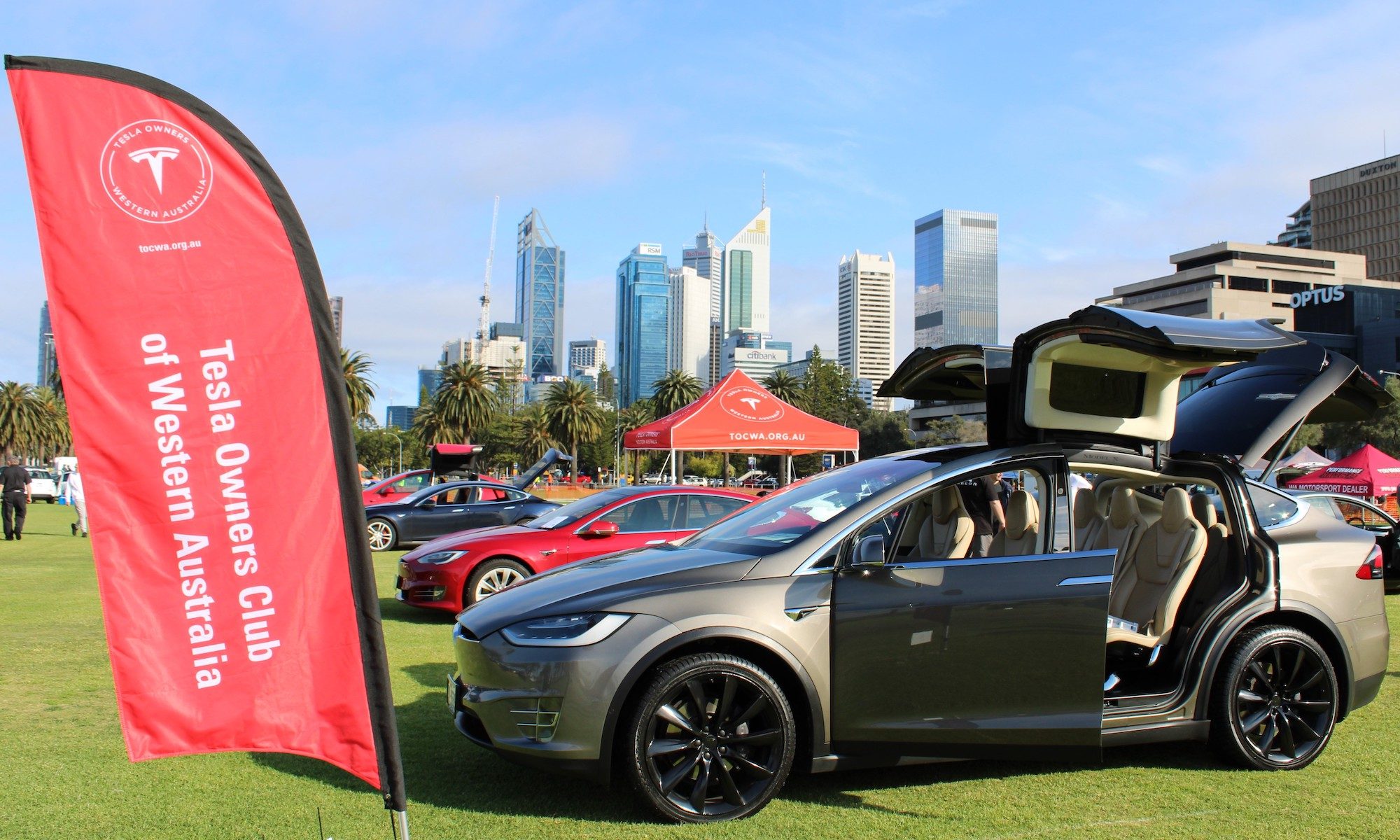A Tesla destination charger is also known as a High power wall connector (HPWC), it has two variations, the rarely seen 40amp single phase that was issued to owners and venues up until late 2015 and the most common and more versatile 32amp three phase (22kw) that can also be connected to a single phase circuit. Technically the HPWC it’s not actually a charger but better described as a smart device that provides safe AC electricity to the vehicle’ s onboard charger, the charging power is limited by both the electricity feed to the HPWC and also the capacity of the onboard charger, a vehicle with an 11kw onboard charger connected to a 22kw HPWC will only charge at a maximum of 11kw, the same vehicle connected to a 6kw limited HPWC will only charge at a maximum of 6kw.
Although a Tesla HPWC is restricted to a maximum of 22kw (32amp three phase) they still have two advantages over DC charging, firstly AC charge points are multiple times cheaper to install per kw of power available compared to DC chargers. Secondly AC charging speeds may be slower but are very consistent and predictable right up to a battery state of charge (SOC) above 97%, DC chargers on the other hand have a large variance in charging speed depending on battery SOC, this can be confusing for new EV owners.
Publicly available HPWCs are provided by Tesla but on the vast majority of occasions owned by the property it’s connected to, prior to late 2017 the installation fee was covered by Tesla, since that time almost all installations have been paid for by the buildings owners, in regional areas this can cost upwards of $1500 per unit, this is a significant cost for EV’s that may or may be few and far between over the next couple of years.
Although most publicly available Tesla HPWCs are referred to as free to use they are better seen as being complimentary for customers. In other words a shopping centre that’s installed a charge point is expecting the EV owner to be a paying customer even if you only buy a drink, no one is monitoring purchases but any drivers taking electricity without supporting the location is an unwelcome member of the EV community that will spoil it for other owners in that area. If the local council has installed a charge point they’re not expecting you to sit in your car, they’re expecting you to get out and boost the local economy (keep in mind, there are ratepayers less than happy with their local council installing charge points), anyone seen sitting in a EV getting free electricity is sure to get a negative mention at the next council meeting.
Tesla HPWCs in regional motels and service stops are very much “not free”, the owner, management or staff will likely see you drive in from the main highway. Some charge a per kWh cost others charge on a time basis, those that don’t charge for the electricity have a high expectation you’ll stay overnight or buy lunch, at this stage electricity is still expensive in regional areas, if they don’t see a business case to continue providing a charge point it will soon get disconnected. In every occasion when using a regional Tesla HPWC always thank the owner/manager, it goes a long way.
A few tips:
- Don’t trust the Tesla touchscreen maps to display the correct power rating of the HPWC, cross reference the location with reliable comments on Plugshare. Often newly installed units have not been adjusted up from the factory setting of 6kw, if you’re the first visitor to that location it’s always a possibility. A few Tesla owners have been know to open the HPWC and increase the setting, personally I wouldn’t do that, firstly it’s not my property and secondly there could be a very good reason it’s at that setting. Best to mention it to the owner who will call out the electrician.
- If the HPWC is not displaying a Green light it’s very likely switched off at the meter box, often in regional areas management will do this so EV owners make the effort to go in a say hello. Even if the HPWC is switched on its always good policy to ask permission before plugging in the car, it only takes a minute and provides goodwill for future EV owners.
- If the HPWC is switched on but fails to charge it may need a reset, unplug from car, press and hold red “Reset” button on left side of HPWC until the light on the front of the unit goes out, let go of red button and wait until light goes back to normal (about a minute), then attempt to charge, this may take two attempts.
- The biggest tip I can give you is ALWAYS BE CHARGING, if you are in a country area don’t bypass a HPWC that you know is working for one that hasn’t been used in a while.



how about supplying the owner of your destination charger a meter for the owner to recover the cost of the electricity used. or point to us where to buy such device,
My experience with my 2 destination chargers are that the users are not considerate with the charging cable and usually left it on the ground or mess up the cable. That is why we turn off at night.
Harry – it’s likely that v3 HPWCs will support that capability – it’s not as simple with the older ones.